Last updated on March 2nd, 2025
Condensing boilers produce wastewater (from the flue gases) that needs to run freely down through the boiler, into a trap, then down a plastic pipe and into a drain. Having a blocked condensate pipe means your boiler will not work. I have been repairing boilers for over a decade and fixed many condensate pipe problems.
How to check if condensate pipe is blocked
A boiler trying to fire up and gurgling is a sign of a condensate pipe being blocked. If a boiler is not working, and I suspect it could be because of a blocked condensate, the first thing I do is remove the plastic pipe from the boiler.

How to check if it is blocked:
- Place a bucket under the boiler
- Pull the condensate pipe out of the bottom of the boiler
- Reset the boiler
- Turn the heating on to see if it works
This should only be done on boilers with a rubber connector connecting the pipe to the boiler.
If the heating comes on when the pipe is removed the condensate pipe is blocked. Refit the pipe back into the boiler and work on unblocking it. Do not leave the condensate pipe out of the boiler and leave the heating on. If the condensate trap fails you can get carbon monoxide spilling into the room.
How to fix a blocked condensate pipe
To fix a blocked condensate pipe you need to unblock it by finding and clearing out the blockage.
How to fix a blocked pipe:
- Thaw out a frozen pipe
- Clean out waste pipe
- Clean out the end of the pipe outside
- Clean the condensate trap
Frozen pipe
The most common cause of a condensate pipe becoming blocked is when it freezes. You must defrost the ice by pouring hot water over the plastic pipe outside. This should melt the ice and clear the blockage. Then reset the boiler. A frozen condensate pipe will usually freeze because the pipe diameter is not big enough or there’s not enough of a fall on the pipe. This means the wastewater is always sitting in the pipe and freezes easily.
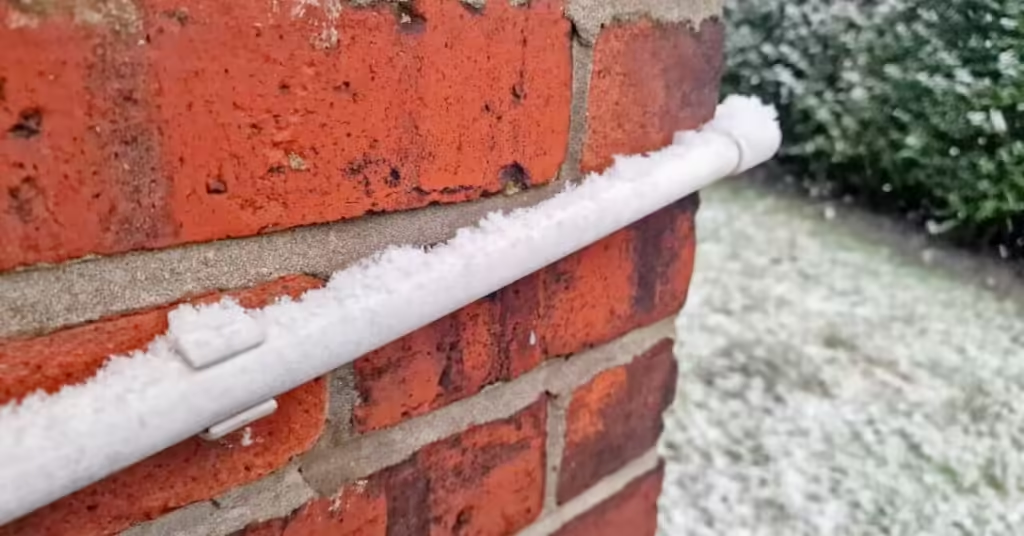
Clean out waste pipe
If the condensate pipe runs under a kitchen sink to a waste pipe, the waste might be full of gungy slop that has built up over the years. Even if the water from the sink is running away, it could still be partially blocked enough for the boiler wastewater to back up to the boiler. This will need to be cleaned out to fix it. Or you can run a new condensate pipe from the boiler directly to a drain or soil pipe.
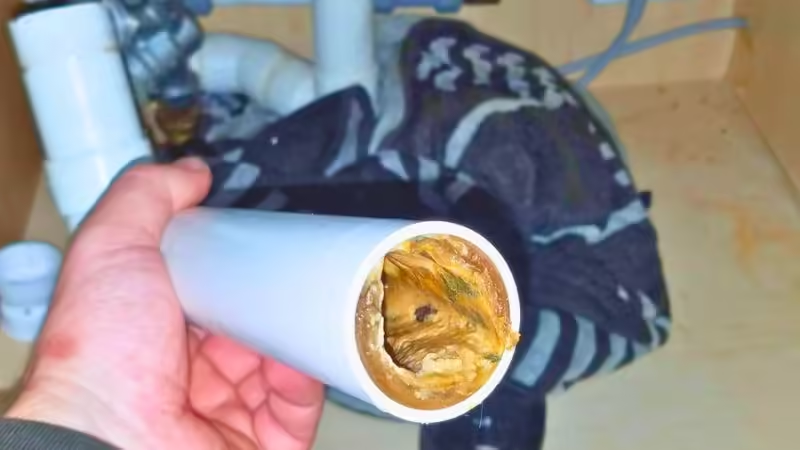
Clean out the end of the pipe
Another way condensate pipes can get blocked is at the end outside where it discharges into a drain. To fix it you should check the end of the pipe for any leaves and dirt that might be restricting or blocking it and clear them out.
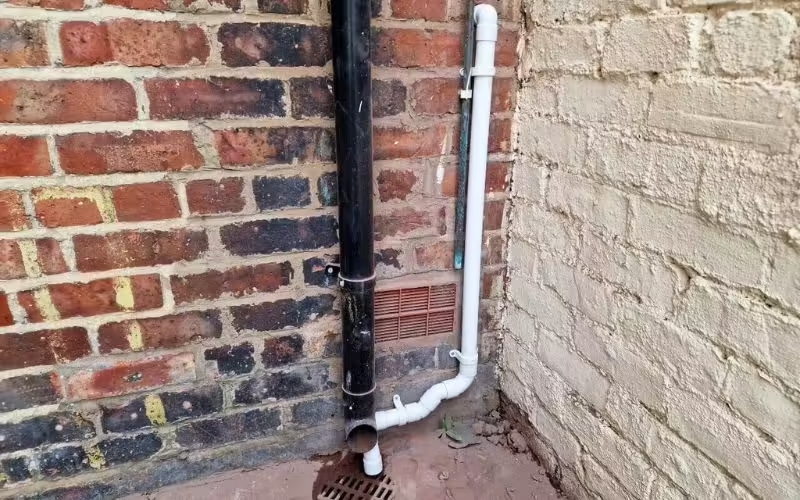
Clean the condensate trap
The condensate trap in the boiler could be full of dirt and other debris on certain boilers. The trap needs to be removed and cleaned out properly and then refitted. If the trap is blocked then removing the pipe to check (as above) will not help. You will only be able to tell by looking at the trap.
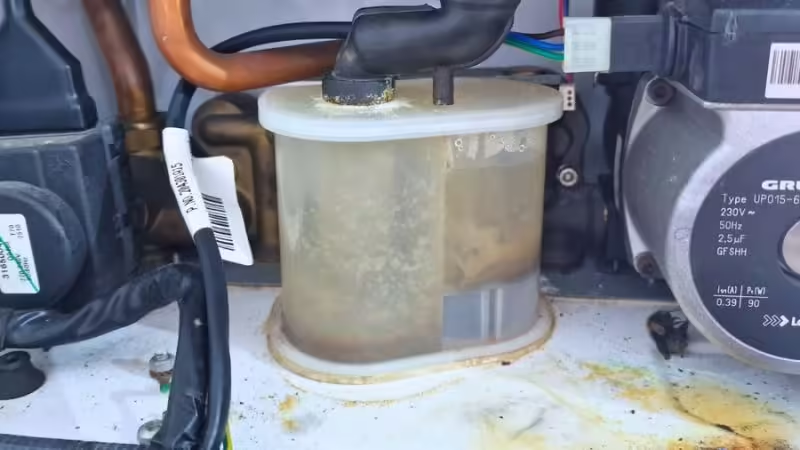
Conclusion
The biggest problem with condensing boilers is the pipe becoming blocked or frozen. The first thing you should do if you suspect a pipe has frozen is to pour hot water over it and reset the boiler.
Cleaning out a blocked pipe because of other blockages can be very tricky so running a new pipe in might be the best solution.
Feel free to ask any questions in the comments below, and I’ll do my best to help. If you found this post helpful, please consider sharing it.
FAQs
Can you use copper pipe for condensate pipe?
No, you can not use copper or brass for pipe or fittings on a condensate pipe. The condensate wastewater is acidic and it will corrode the copper and brass or any other metals. Condensate pipe and fittings must be plastic.
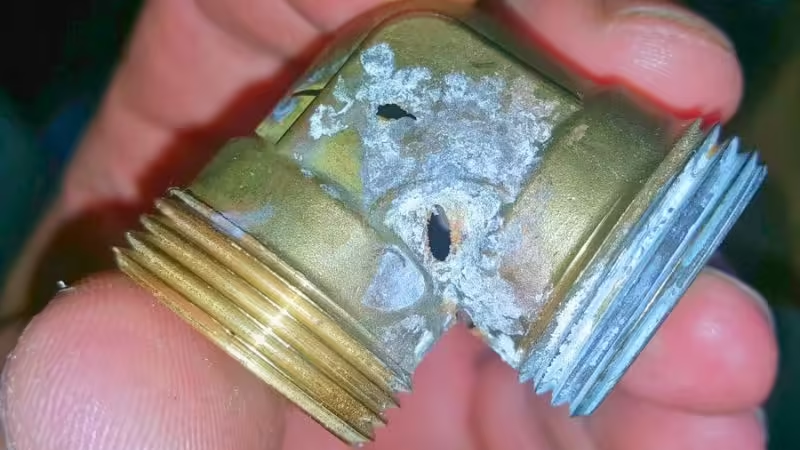
Is a leaking condensate pipe dangerous?
Yes, a leaking condensate pipe can potentially be dangerous. If your condensate pipe is leaking outside then it is not dangerous, but you don’t want young children or animals to be able to access and ingest it. However, if it’s leaking inside the property onto a gas pipe, for example, this is very dangerous and needs to be fixed ASAP!
Where is the condensate pipe on my boiler?
The condensate pipe will be under your boiler. It should be the only white (rarely black) plastic pipe. It runs from the bottom of your boiler to a drain or condensate pump.
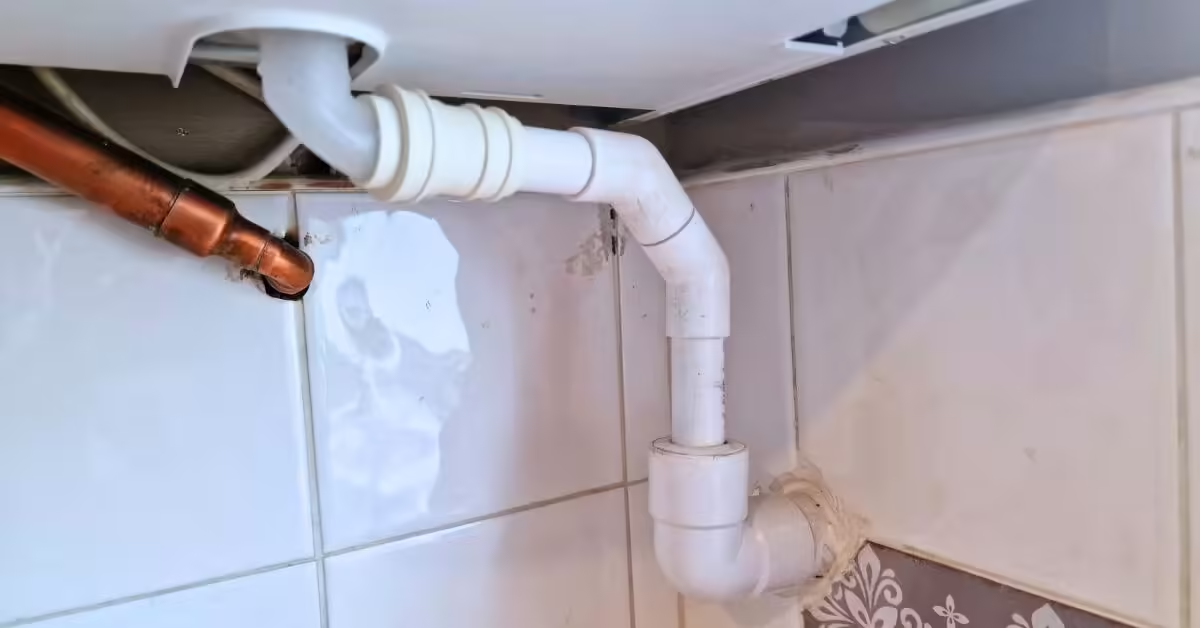

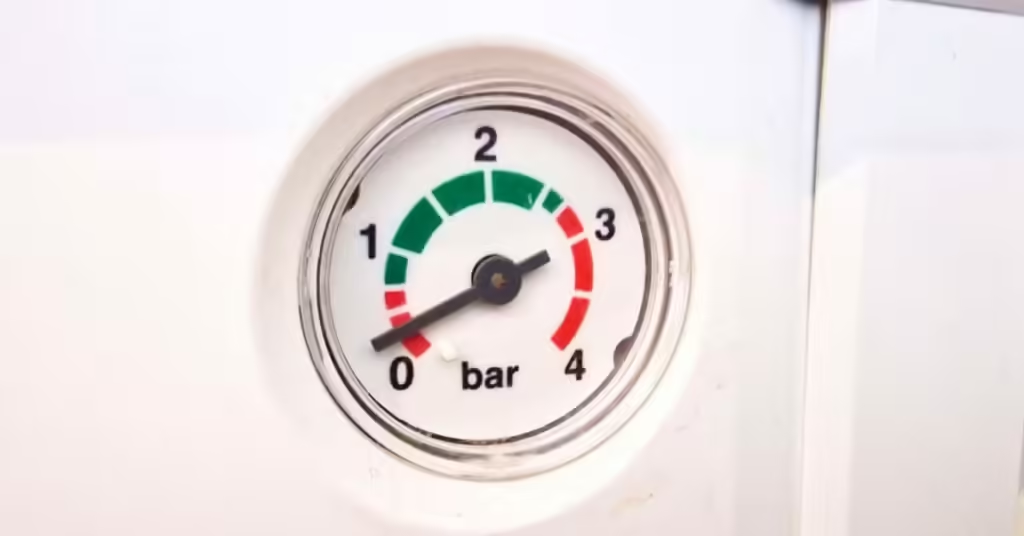
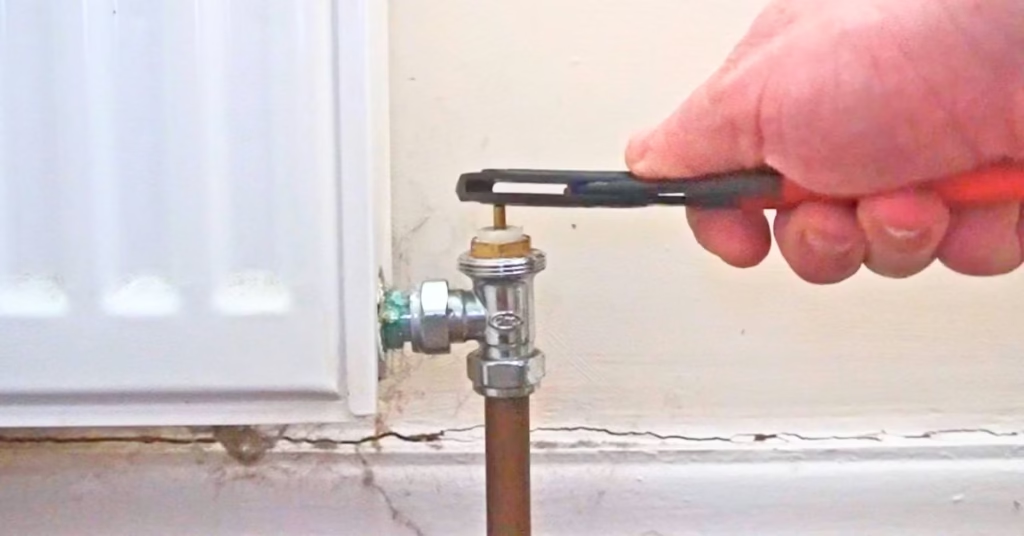
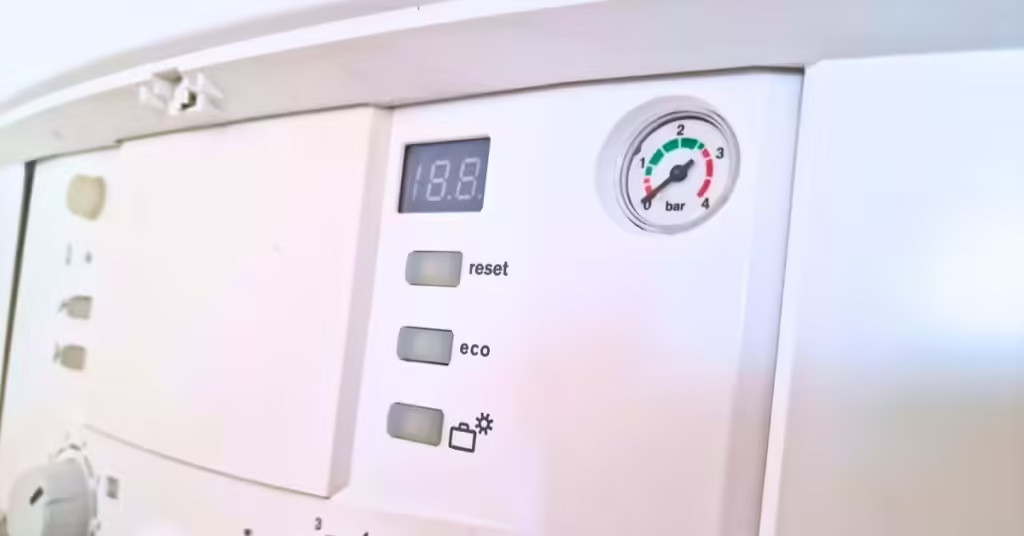
hi my names denise been told by my boiler cover engineer that i have a frozen condense pipe on my boiler and that when boiler was fitted by another company the pipe is wrong size its 22ml and should be 44ml im without heating now for 2 days and my boiler company that im insured with says my policy dont cover them changing the pipe
Yeah because it wasn’t fitted to the manufacturers instructions, it’s the installers fault. Try pouring some hot water on the plastic pipe outside and reset the boiler.
Our ten year old Baxi combi boiler is reverberating intermittently when heating and hot water is on. The sound is like distant thunder This started happening when the shower tap was turned up to maximum heat. It now wont seem to shut down even when turned off, after working ok for several hours. Does this sound like a condensate pipe blockage? The problem appeared just as the weather turned cold, the boiler having performed faultlessly for ten years.
no it doesn’t sound like a condensate pipe blockage.
Hello. My gas boiler is Wolf FGB-K-28. The condensate goes over washing machine hose about 7m. It worked well until recently when condensate began to overflow between boiler condensate output and upper end of hose. I tested the hose with water and it seems it is not blocked – water leaked at the other end. I noticed a small concavity on boiler output and it seems its purpose is for air supply inside pipe/hose below. Give me some emaill address if possible to send photos.
Our condensate pipe goes outside and finishes underground but when we get heavy rain it backs up and boiler won’t work is there any solutions for this? Thanks
Hi Charlotte,
It sounds like you have a condensate soakaway fitted if it’s going underground. You could fit an air break in the pipe outside so that when the water backs up it pours out of it. It’s basically a gap in the pipe so water will go down the pipe but not up.
Thank you for getting back to me really appreciate it will look into getting a air gap fitted
Hi Ian
My boiler is coming up with error E133. The burn light keeps going on and off does that mean the pilot light has gone out? It makes a thudding noise as though its trying to light up.
Hi Ian, our condensation pipe goes under the sink and is blocked (I assume from sludge) would it work to carefully send some drain cleaner down the out pipe in the first instance to start clearing the blockage before calling in a plumber?
Hi, is it possible for the pipe to be blocked and for water to back flow up into the boiler and spray inside? Ours appears to have done that. When the pipe exits the house it is level for about a metre before going into the drain pipe. It happened whilst someone was taking a shower.
Thanks
Ian
Hi Ian,
It is possible for the pipe to block and water to backflow into the trap and maybe even spray inside the boiler, but it could also be something else that’s spraying, probably on the hot water side of the boiler.
Thanks Steven, it’s happened twice in 7 months, it’s only 2 years old and been serviced. The only thing that’s changed is the pipe was moved to accommodate a part garage conversion so more of it was moved outside.
Cheers
Ian
My condensate pipe has been spewing loads of water from the top of the pipe during the recent very heavy rain. What’s the most likely cause for this, please? As far as I’m
aware, there is an air break in the pipework. Many thanks – Dee
Hi Dee, there shouldn’t be any water coming out of the pipe so it sounds like it’s not connected or sealed properly.
Hi, I am having a problem with my condensate pipe from my Worcester combi boiler freezing and the boiler going off. This has only happened twice in eight years and both times after prolonged freezing periods like this week and the beast from the east a few years ago.
It appears to be fitted correctly with a 22mm pipe and elbow out of the wall then into about one foot of larger pipe probably 40mm to drain.
I am guessing the problem may be round the 22mm elbow,would lagging help ? The pipe is on the second floor so a ladder would have to be used to put hot water on it.
Thanks,Paul.
Hi Paul,
The condensate pipe should be at least 32mm all the way through the wall from outside to in, then it can drop down to 22mm inside the property. If there is any 22mm pipe or fittings outside then this should be upgraded to 32mm or 40mm and lagged.